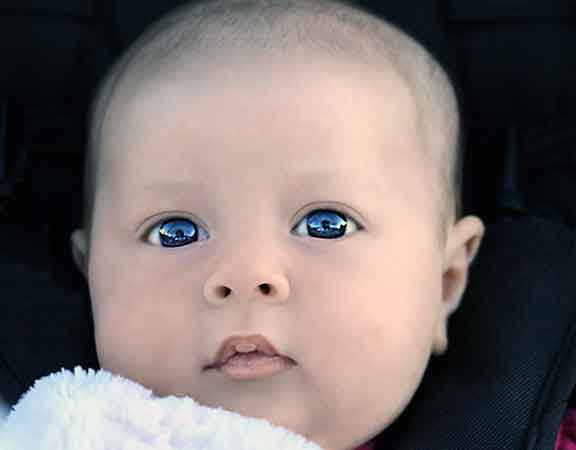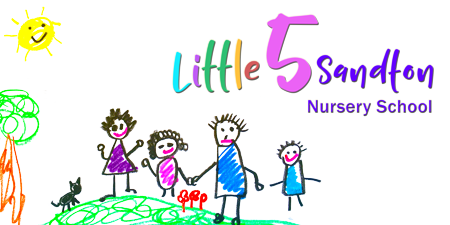Understanding your baby’s developing vision is critical as a parent and here’s why…

Baby’s First Blinks
The second Baby is born, his vision kicks in and his visual development begins. At birth, your baby’s eyes have the visual acuity of 20/400, but his rapidly developing vision will reach the adult level of 20/20 by the time he is 3-5 years old. That rapid growth is why his first months are so important to his visual development.

Week 1: Blurry View
In her first week,Baby can only see objects about 8-12 inches in front of her face. This is about the distance from her face to yours while feeding. Babies generally hold their gaze for only a few seconds.Don’t be afraid to get up close and personal with your baby when you’re talking with her or making faces at her.

Week 1: It’s All Black & White
The second Baby is born, his vision kicks in and his visual development begins. At birth, your baby’s eyes have the visual acuity of 20/400, but his rapidly developing vision will reach the adult level of 20/20 by the time he is 3-5 years old. That rapid growth is why his first months are so important to his visual development.
Just after birth, your baby sees only in black and white, with shades of gray. As the months go by, your baby will slowly start to develop his colour vision. Because of this, Baby loves to look at contrasting colours in bold geometric patterns. Your little one will develop his colour vision around 4 months.

Week 2: Recognition
By 2 weeks, Baby might start to recognize her caregivers’ faces. She will focus on your face for a few seconds as you smile and play with her. Just remember to stay within her field of vision: it’s still around 8-12 inches. This is where all of that up-close-and-personal time with your child pays off.

Week 3: Stop & Stare
At this point, your baby might recognize your face, but he can still only see what’s 8-12 inches in front of him. However, his attention span might have gotten longer. Up until now, Baby might have stared at your face for only a few seconds. Now he will be able to hold his gaze for up to 10 seconds.Keep stimulating his vision by talking and making funny, smiling faces close to his. Encourage playtime by placing bold-pattern toys in front of him.

Week 4: Back & Forth
Baby might start to look at things to either side of her as they move back and forth across her midline. But she’ll do this by turning her entire head. She won’t be able to move only her eyes until she’s about 2-4 months old.

Monthly Milestones
It’s important to remember that each baby develops at her own rate. The following slides share general guidelines that paediatricians and paediatric ophthalmologists follow to make sure your baby is advancing at a normal pace. From here on, there are milestones doctors look for in your baby’s vision to make sure his visual development is on the right track. Because all babies develop differently, you might notice that some of the months and milestones overlap.

1-Month Milestones
- Moves eyes and head toward light sources.
- Tracks objects horizontally across midline (especially faces).
- Makes eye contact and focuses on a caregiver.
Mom Tip:
At 1 month, Baby’s eyes are not very sensitive light.
Don’t worry about having the light on or turning it on while your baby naps… It won’t affect her ability to sleep.

2 to 3 Month Milestones
- Tracks an object both vertically and circularly.
- Recognizes faces.
- Begins to move eyes independently from head.
- Exhibits increased light sensitivity.
- Studies hands or feet.
- Becomes easily distracted by interesting sights.
- Holds intense eye contact for longer periods of time.
Mom Tip:
Now is the time to buy a mobile for above the crib.
Baby will love lying on his back and staring up at the moving objects. At this age, your baby will watch your lips move as you read, sing, and talk to him.

3 to 6 Month Milestones
- Watches and studies own hands and feet, as well as toys.
- Observes toys falling and rolling away.
- Shifts fixation across midline (moves gaze from left to right).
- Widens visual sphere of attention gradually.
- Focuses attention almost across the room.
- Likes looking at reflection.
- Moves eyes independently from head.
Mom Tip:
At this point, your baby is going to be more interested in toys and pictures. He’ll constantly grasp for things that stimulate his vision. Around six months, introduce simple games like rolling a ball back and forth, which boosts hand-eye coordination. And encourage visual memory by hiding a toy under a blanket and then revealing it to him.

7 to 10 Month Milestones
- Shows interest in pictures.
- Notices small bread crumbs. (Hopefully, this will be at his high chair and not on the floor!)
- Recognizes partially hidden objects.
- Hand-eye coordination improves as your baby learns to crawl.

11 to 12 Month Milestones
- Looks through windows and recognizes people.
- Recognizes pictures.
- Plays hide and seek.
- Appears visually oriented at home.
- Shows sustained visual interest.

Happy Faces
Throughout the development of Baby’s vision – especially in her first 3-4 months –the best visual stimulation is seeing a caregiver’s face. There is scientific evidence that babies have a genetic preference for looking at human faces.However, it isn’t really our features they like to look at. It’s our hairline.Babies like the contrast between our skin and hair colours.

At the Doctor’s Office
Your paediatrician will check out your baby’s vision during your scheduled check-ups. Most of the time, she’ll do it so quickly you might not even know it happened. Because of this, it isn’t necessary for your baby to have an eye exam until 6months of age. But don’t be afraid to ask your paediatrician about the status of your child’s eyes during check-ups. And if you think there is a problem with your child’s eyes before his 6-month exam, trust your instincts and see a doctor.

Warning Signs
Dr. David Coats, a paediatric ophthalmologist and clinical correspondent for the American Academy of Ophthalmology, says if a baby’s eyes are open, they’re developing. However, it’s still important to be aware of signs that could prompt reasons to see a doctor. Here are things you might want to watch out for:
- Crossing of the eye(s): Some crossing is normal in babies in their first few months. But if the eyes are constantly crossed in or out for long periods of time, this could be a problem.
- Always tilting her head to look at something, which may signal that one eye is developing faster than the other
- Excessive tearing
- Family history of eye problems
- Constant shaking of the eye(s)
- Structural abnormalities of the eye(s)

More Warning Signs
- Bulging eyes.
- Persistent eye pain, itching, or irritation.
- Persistent redness in the eye.
- Drooping eyelids.
- Extreme sensitivity to light.
- White, greyish-white, or yellow-colour material in the pupil.
Mom Tip:
Premature babies are predisposed to vision problems and should be examined by an ophthalmologist before they head home from the hospital.



Emily Cook
Authorsource: https://www.parents.com/baby/development/physical/understanding-your-babys-developing-vision/